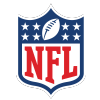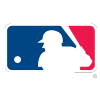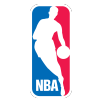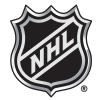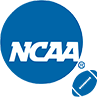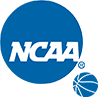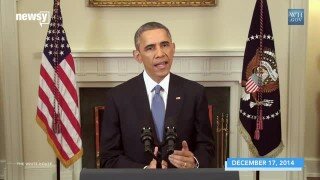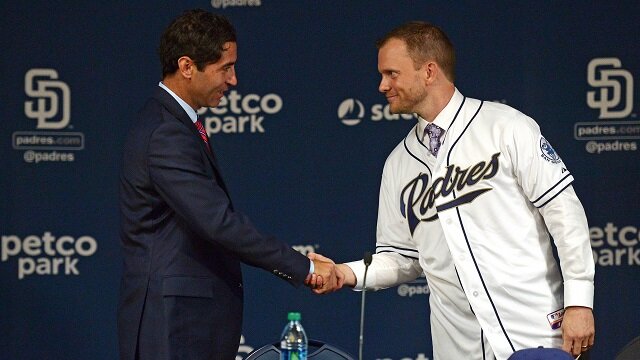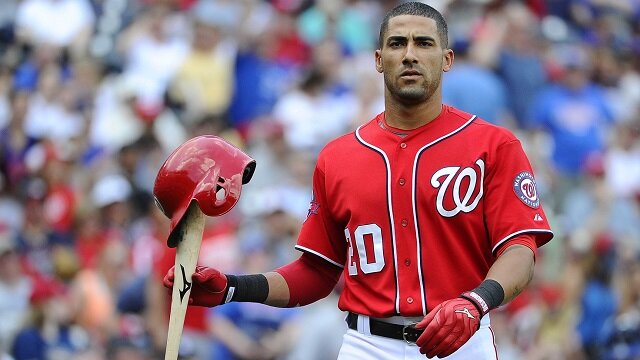
Since the beginning of the 2014-15 offseason, the San Diego Padres have arguably made the most noise of any team in MLB under GM A.J. Preller. The team that ranked dead last in baseball with a .226 batting average and .283 wOBA last season figures to have a much better offense in 2015, adding players such as Matt Kemp, Justin Upton, Wil Myers and Derek Norris.
They weren’t done there, though. Earlier this week, the Padres made yet another splash, reportedly signing James Shields to a four-year, $75 million deal that also includes an option for 2019. If everything goes according to plan, Shields could turn out to be the final piece that the Padres need in order to get over the hump and contend in a tough NL West division.
While there is plenty that could still go wrong, let’s begin by talking about what could go right.
Shields, who is set to enter his age-33 season, is the owner of one of the game’s most durable arms, throwing a minimum of 203.1 innings while making at least 31 starts every single year since 2007. He has also compiled some rather impressive numbers along the way.
Sure, Shields’ resume is not exactly flawless as he had a rough season back in 2010, posting a 5.18 ERA (4.24 FIP) in a 1.7 fWAR campaign, and his struggles in the postseason have been well documented. However, he has been on some kind of a tear ever since the beginning of 2011, a season in which he earned a third-place finish in the AL Cy Young voting, finishing behind only Jered Weaver and Justin Verlander.
Over the past four years, Shields has gone a combined 58-39 with a 3.17 ERA (3.49 FIP) and a 1.15 WHIP with the Tampa Bay Rays and Kansas City Royals while averaging 233 innings per season. He has accumulated 16.5 fWAR over that same stretch, placing 10th among all qualified starting pitchers in baseball.
As far as Shields’ velocity goes, his four-seamer was still coming in at an average velocity at around 92.5 mph in 2014, according to data from both Brooks Baseball and Fangraphs. As seen in the chart below, the velocity of his fastball has remained very steady over the course of the impressive four-year run, even as he continues to grow older.
Although he still throws plenty hard, Shields is not a strikeout artist per se, owning a collective 7.66 K/9 over the course of his career — very solid, but not exactly eye-popping. He did, however, average 224 strikeouts between 2011-12. Shields is not necessarily an extreme ground-ball pitcher either, posting a very sound, but not off-the-charts 44.7 percent career ground ball rate.
That said, he is a pitcher who may need to rely on the help of his defense more than a strikeout machine such as Max Scherzer, who ranks second in all of baseball with a 10.46 K/9 since the beginning of the 2012 season.
When Shields was in Kansas City, the Royals fielded one of the finest defensive teams in the business, posting an MLB-best Def rating of 162.3 over the past two seasons.
Even though Petco Park is generally regarded as one of the better pitcher’s parks in the game, which might make the move to San Diego seem like a very good fit for Shields on paper, it is unlikely that the Padres will be able to give him the same type of defense that the Royals were able to over the past two years.
As it stands today, Will Middlebrooks, Alexi Amarista, Jedd Gyorko and Yonder Alonso are slated to form the quartet that rounds out the Padres’ infield, with other players such as Yangervis Solarte, Clint Barmes and Tommy Medica perhaps joining the mix as well. While the infield may turn out to be solid enough from a defensive standpoint, it most likely won’t be as sharp as the Royals’ infield.
The outfield, on the other hand, appears to be in even worse shape as far as defense is concerned.
Yes, Kemp has won a pair of Gold Gloves in his career, but he is not exactly a top-notch defender these days, and neither is Upton. Plus, Myers won’t exactly be Lorenzo Cain in center field either. The Padres do, however, still have Cameron Maybin buried on the depth chart, and it is perhaps worth noting that Myers logged a little bit of time at third base in the minor leagues as well as a grand total of four innings at first in the majors, so they may have some flexibility if things get too messy.
If Shields can get past a potentially shaky defense, however, and still manage to give the Padres yet another 4.0-ish fWAR, 200-plus inning season, he will truly be a stabilizing force on a talented, yet question-filled rotation. For what it is worth, Fangraphs’ Steamer has Shields slowing down just a little bit, projecting him at a 11-11 record with a 3.49 ERA, (3.35 FIP) and a 1.19 WHIP through 192.0 innings in a 2.6 fWAR campaign.
It should be noted that not a single one of the Padres’ other starters are projected to cross the 2.0 fWAR barrier according to Steamer, so even adding 2.0 wins above replacement could certainly make a major difference.
Even though Shields has not been showing any significant signs of regression, it is indeed fair to wonder about the mileage he has put on his arm. Furthermore, given the fact that the Padres have so many other question marks in their starting rotation, they could potentially find themselves in a tight spot if Shields doesn’t pan out the way that they are hoping.
For starters, Andrew Cashner can absolutely be a legitimate ace, but health was an issue last season, limiting him to only 19 starts. If Cashner can just get back to being the pitcher who threw 175.0 innings while posting a 52.5 percent ground-ball rate in a 2.1 fWAR campaign back in 2013, and Shields continues to pitch like his usual self, that duo could certainly make a formidable 1-2 punch and combine for upwards of 6.0 fWAR.
If one or both falters or struggles to stay healthy, however, the Padres might be in trouble.
Obviously, another question mark for the Padres is Tyson Ross. Last season, the late-blooming Ross had a breakthrough year in his age-27 season, going 13-14 with a 2.81 ERA, (3.24 FIP) and a 1.21 WHIP in a 2.6 fWAR campaign. He may very well have another great season in store for 2015, but it could also turn out that last year was a fluke.
The other potentially troublesome issue with Ross is that he was sidelined for the second half of September due to a flexor strain in his forearm. Ross threw 195.2 innings in last season, blowing away his previous career-high of 125.0 that he set back in 2013. Therefore, he may enter 2015 with a few questions surrounding his arm after the injury and the enormous spike in his workload.
Ross also threw his slider an MLB-leading 41.2 percent of the time, so he may be a bit of an injury risk going forward if he continues to use that pitch at such an elevated rate.
There is also the curious case of Ian Kennedy, who is arguably coming off of his best season since stringing together a 4.9 fWAR campaign with the Arizona Diamondbacks in 2011. In 2014, the now 30-year-old went 13-13 with a 3.63 ERA, (3.21 FIP) and a 1.29 WHIP in a 2.9 fWAR campaign. He also threw 201.0 innings, crossing the 200 marker for the third time in his career.
It now remains to be seen whether he has turned over a new leaf, or if he will regress to being the 1.3 fWAR pitcher that Steamer is projecting him to be; or worse yet, the 0.5 fWAR pitcher he was in 2013.
The battle for the No. 5 spot in the Padres’ rotation will also be an interesting story to keep tabs on in Spring Training. Odrisamer Despaigne and Robbie Erlin are two of the candidates who will be competing for the spot, but the Padres also brought in Brandon Morrow and Josh Johnson, who will each be looking to make comebacks.
Although Despaigne showed a certain amount of promise during his time in the big leagues last season, posting a 3.36 ERA (3.74 FIP) and a 1.21 WHIP, he threw only 96.1 innings with the Padres, so it will be interesting to see how well he will be able to handle a full workload if presented with the opportunity. Erlin, who is still only 24 years old, has posted a 4.58 ERA through 24 games in the big leagues.
Johnson last pitched in the majors back in 2013 and Morrow has made 30 starts only once in his career, so the Padres would clearly be catching lightning in a bottle there as well. While any one of those four pitchers could step up and have a great season as the Padres’ No. 5 starter, none of them are a sure thing, adding even more questions after Cashner, Ross and Kennedy.
If everything works out as smoothly as planned, it would hardly be shocking to see this staff combine for 15.0-plus fWAR. As a matter of fact, their ceiling may even be at 20.0 fWAR, which would have led the majors last season, finishing ahead of a Detroit Tigers‘ staff that was worth 19.6 fWAR.
Things rarely work out perfectly, however, and even the most optimistic Padres fan should be able to admit that there’s a lot that can go wrong. If Cashner struggles to stay healthy, Ross and Kennedy regress, and Shields has trouble adapting to his new defense and finally begins to feel the effects of all of the innings he has thrown, the floor for this rotation could be pretty low.
It is certainly nice to see that the Padres, a team that hasn’t been to the postseason since 2006, have made a clear effort to get back into the mix. However, there is still a lot that will need to go right in order for them to contend.
To be fair, it is hard to find a team that doesn’t have question marks, but the Padres appear to have more variables than most. If everything does pan out, the Padres could indeed be a force to be reckoned with in the NL West and give the Los Angeles Dodgers and the defending World Champion San Francisco Giants a run for their money.
Even with the addition of Shields, though, it still doesn’t appear to be a slam dunk by any stretch of the imagination.
*All statistical information courtesy of Baseball Reference, Brooks Baseball and Fangraphs
Brad Faber is a Senior Writer and Sabermetrics Columnist for www.RantSports.com. Follow him on Twitter @Brad_Faber, “Like” him on Facebook or add him to your network on LinkedIn or Google.


